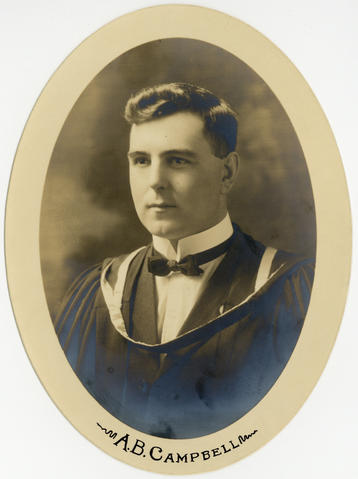The numbers paint a grim picture.
By the time the First World War ended on Armistice Day, November 11, 1918, around 20 million military personnel and civilians had perished and another 21 million were wounded. The toll from the Second World War was even greater.
Canadians (and Newfoundlanders and Labradorians, whose province had not yet joined confederation) played a large part in both conflicts, with close to 620,000 individuals enlisting in the first war and more than a million in the second. Of those, some 100,000 lost their lives and 200,000 more were wounded.
Among those individuals were students, alumni and other members of the ĂŔĹ®×ö°® community. This year, as we prepare to remember those individuals, we share the stories of five Dalhousians who served — and in some cases gave their lives — in the First World War.
 George W. Stairs, Class of 1908
George W. Stairs, Class of 1908
George William Stairs holds the unhappy distinction of being the “first Dalhousian to fall for Empire,” as was reported in the ĂŔĹ®×ö°® Gazette on 17 November 1915. The Stairs family had close connections with ĂŔĹ®×ö°®. George’s cousin, Gilbert, was the University’s first Rhodes Scholar. In all, seven Stairs men — all ĂŔĹ®×ö°® alumni — served in the war, four of them dying overseas in active service.
Ěý
 Alexander Brown Campbell, Class of 1921
Alexander Brown Campbell, Class of 1921
Alexander Campbell had completed just one year of medical school at ĂŔĹ®×ö°® when he enlisted in the 2nd Heavy Battery, Canadian Field Artillery, in January 1915. He served in France for two years before he was returned to Canada alongside some 90 other soldiers discharged to return to medical studies, primarily at McGill and the University of Toronto. Recognition that these men were more valuable as fully trained medics than as field soldiers coincided with the government’s decision to exempt all medical, dental and veterinary students from conscription, which had come into effect with the Military Service Act of 1917. From then on, the university was required to provide the Department of Militia and Defence with the names of all final-year medical students, in order that they be conscripted into the Canadian Army Medical Corps on graduation. By October 1918, to fill the dwindling ranks of the CAMC, all medical and dental students with at least one year of professional education were required to undergo military training. Accordingly, Alexander Campbell reenlisted on 9 October 1918, to be discharged just one month later, after the Armistice.
Charles Livingstone, Class of 1903
David Livingstone, Class of 1918
 The Livingstone family, from Boularderie Island, Cape Breton, lost five sons to the First World War. Charles Livingstone (shown left) was a graduate of ĂŔĹ®×ö°® Law School who enlisted in World War I at the age of 43 and died during the Battle of the Somme while serving with the 1st Canadian Mounted Rifles. His younger brother, David (right), was still at Law
The Livingstone family, from Boularderie Island, Cape Breton, lost five sons to the First World War. Charles Livingstone (shown left) was a graduate of ĂŔĹ®×ö°® Law School who enlisted in World War I at the age of 43 and died during the Battle of the Somme while serving with the 1st Canadian Mounted Rifles. His younger brother, David (right), was still at Law School at the outbreak of the war, and quit his studies in 1915 to enlist in the 185th Battalion, Cape Breton Highlanders. He died just one month before the Armistice. The brothers lie in military cemeteries at Pozieres and Haynecourt in northern France.
School at the outbreak of the war, and quit his studies in 1915 to enlist in the 185th Battalion, Cape Breton Highlanders. He died just one month before the Armistice. The brothers lie in military cemeteries at Pozieres and Haynecourt in northern France.
Ěý
Ěý
Ěý
Ěý
Ěý
George Henderson Campbell, Class of 1916
“Geordie" Campbell was a fourth-year student in Arts and Sciences when he enlisted in October 1915 with the First Canadian Pioneer Battalion. Six months later he was killed in action near Ypres. His parents established a memorial scholarship in his name, “The George H. Campbell Scholarship Fund,” which a century later continues to support new Dal students.
Learn more
ĂŔĹ®×ö°® led a stationary hospital during the First World War
How Dal campus became a training ground for potential soldiers


